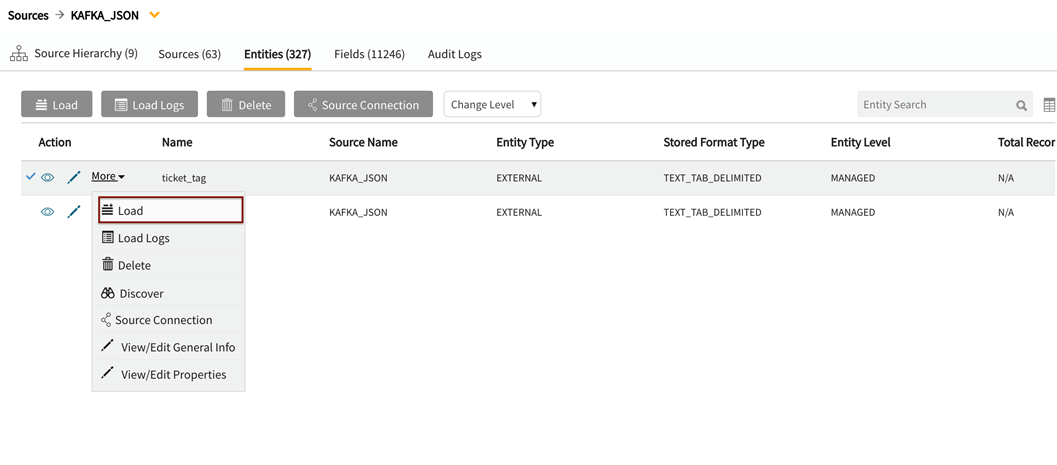JSON: Existing source
Adding a new JSON entity to an existing source
Select radio button: To existing Source
This will kick off the Add Data wizard to define a new entity within an existing source.

Select Source Name from dropdown. This is the source that the new entity will be added to.
Entity Level: Specify level of data management
(see System Settings: Level Control)
The default level for the source will populate in the dropdown and this can be modified and applied to new entities.
Base Directory: Pre-defined (This is the directory where data will be stored in file system)
Groups: Select Group(s) requiring access from the dropdown options. At least one group must be added for the data to be discoverable.
Click Next.
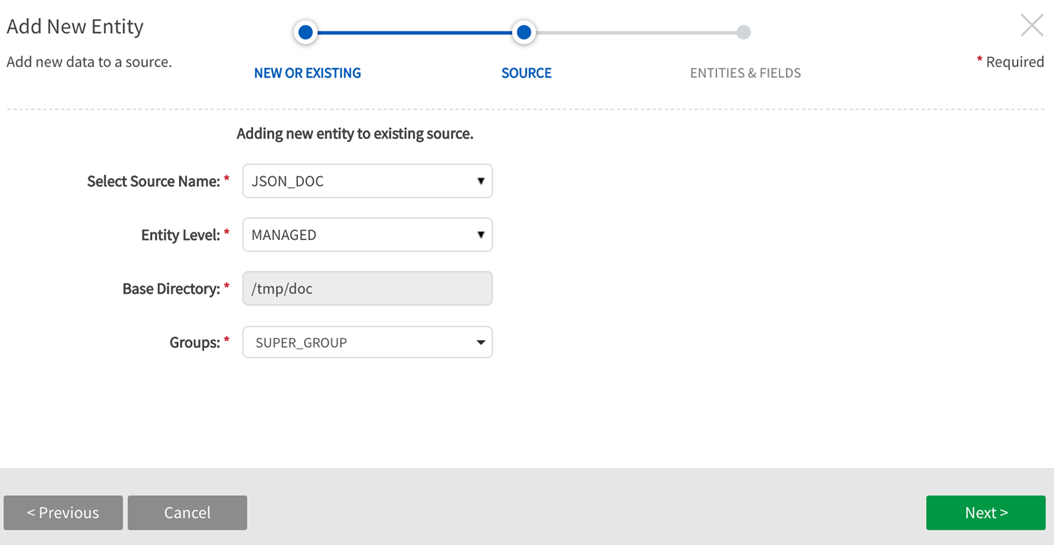
File Format
File Path (or Kafka Topic Name when adding Entities to Existing Kafka JSON sources) For non-Kafka sources, enter the file path (to the originating external source, ending with the file name and file format suffix.
In the case of Kafka (this example) the Entities (tables) display Preview of fields.
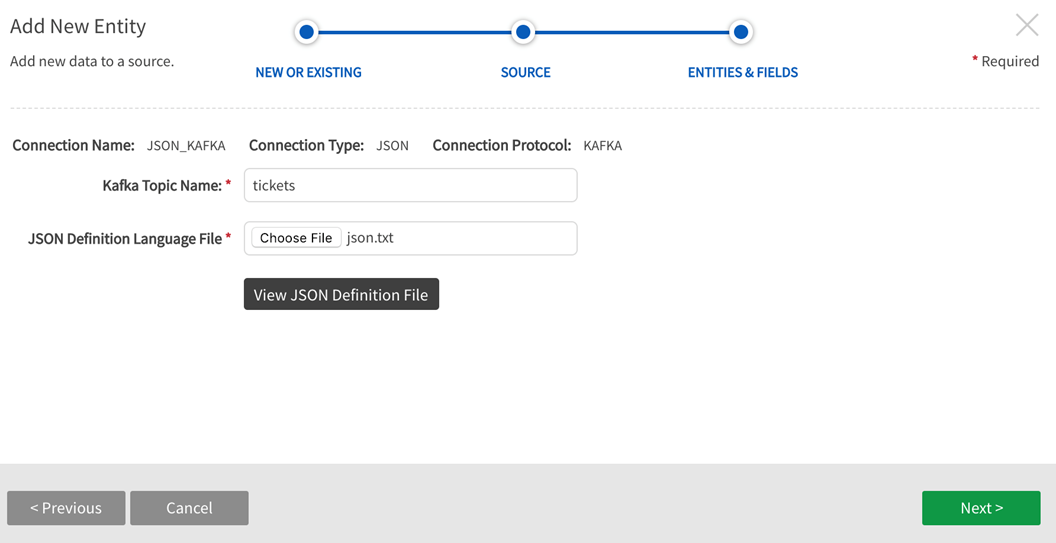
Make sure the JSON Definition File is viewable: View JSON Definition File
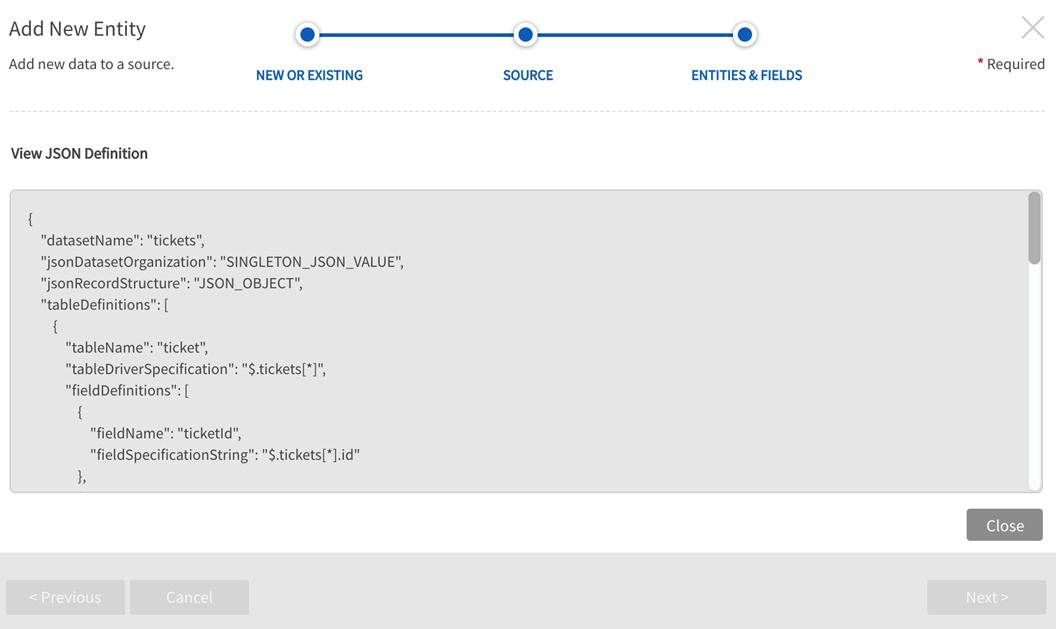
Select Entities & Fields
The entities specified within the .hen validation file display; this step allows the user to select the entities to generate (with ability to rename).
Select Fields Metadata Preview.
JSON fields can be selected and renamed but not added or removed.
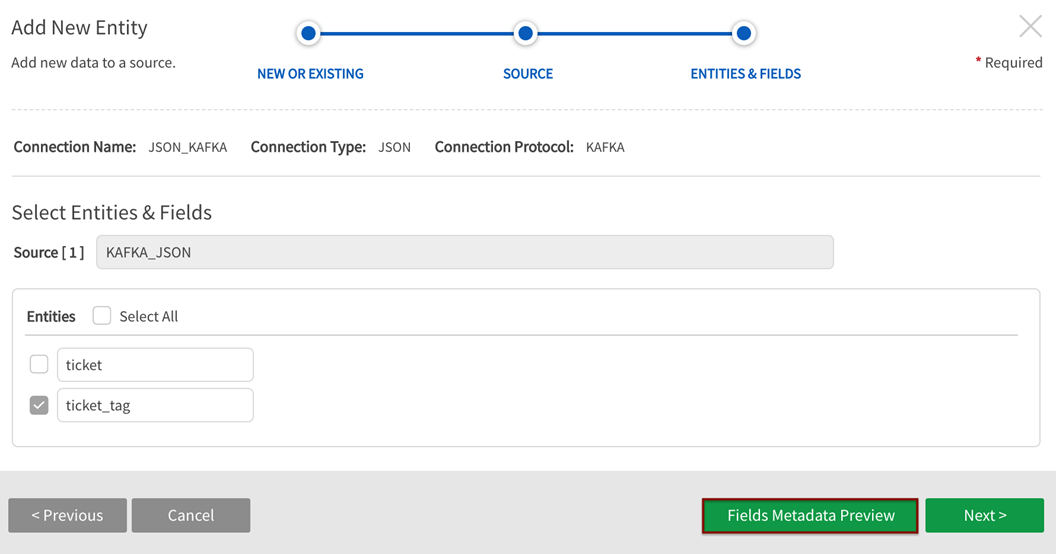
Fields Metadata Preview

Internal file format Type
Options include:
- AVRO
- ORC
- ORC_ALL_STRING
- PARQUET
- PARQUET_ALL_STRING
- TEXT_TAB_DELIMITED
Qlik Catalog Stored Format Type step is skipped for single node environments where stored format is always TEXT_TAB_DELIMITED.

Load Data to the Entity(s). Once the Entity has been saved, navigate to Entities screen in Source to load the data.
Select Load from the More dropdown.
